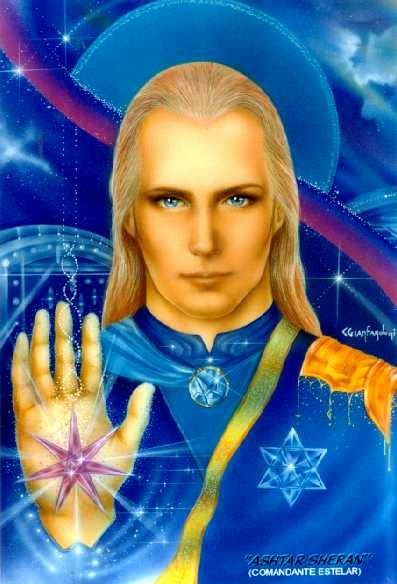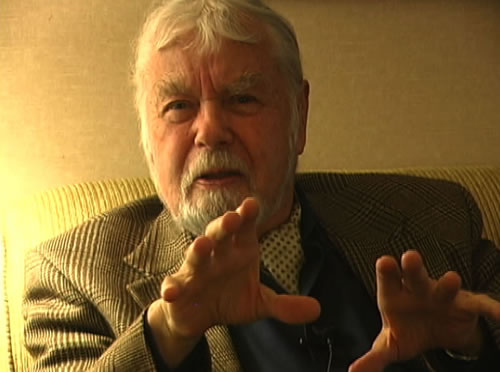This incredible UFO sighting is rather amazing. While this story is very
different from my sighting; it had the same effect. It moves a person from believing or not
believing in UFOs to knowing, without any doubt, that UFOs are real.
Richard
One
late evening in the early summer of 1981, lying sleepless in my student bedsit
at the top of a house in the Fallowfield district of Manchester, I became aware
of a pattern of bright flashing lights on the wall. All I could see through the
curtainless window on the opposite side of the room was a strip of rather
cloudy night sky. The vivid flashing was coming from within, or perhaps behind,
a bank of cloud. As I continued to watch, an object materialised from within
the cloud, advancing until it stood in plain view in the night sky.
It
was a strikingly large craft of some kind, flattish but with rounded edges,
like an old-fashioned bedwarmer, or perhaps a huge English muffin. It was
sparkling-silver and covered all over with a regular pattern of flashing white
lights. After hovering for a few seconds, it began to move across the sky, and
as it reached the right-hand frame of my window, I leant over the side of the
bed to keep it in view. At a certain point it ceased its progress and, at the
same sedate pace, retraced its route back to its starting-point. There it
lingered for a few more seconds, before retreating into the cloud-bank until
its evanescent flashing had entirely dissolved from view. Only then did I
collapse out of bed and start frantically pulling on clothes. I rushed on foot
to my girlfriend’s place to gibber out an account of the incident.
Convention
demands the following declaration: I had not been drinking or taking drugs, I
hadn’t dozed off and reawoken, and I wasn’t in a general state of agitation. It
was a perfectly normal evening: I had gone to bed and was waiting to fall
asleep. Nothing remotely similar has ever happened to me before or since. If
everybody is entitled to at least one experience of the paranormal or
unexplained, this was mine. For the three to four minutes that the whole
episode lasted, it filled me with a mixture of trepidation and thrill, with an
intimation that there might after all be another reality beyond the everyday
one.
The
classic mise-en-scène for a UFO sighting was a remote, deserted location —
country roads or woodland at night, or outside a ranch in New Mexico. A large
spaceship hovering above Manchester should have been seen by tens of thousands
of people. It wasn’t much after midnight, so there would still have been plenty
of traffic on the streets. I followed the local news and talked to everybody I
knew about it, but apparently only I had seen it, from my bedsit room in
Fallowfield. Years later, when the archive of reported sightings processed by
the now defunct UFO desk at the Ministry of Defence went online, I searched
through the lists for 1981. There was nothing that resembled my sighting, and
nothing at all in the whole of the UK for the month in question, or the months
before and after it.
The spectacular fulfilled its purpose in shoring up devotion,
transporting the soul, training the inner vision on higher things
There
are no UFOs, and there never were. That, at least, is the official story, and
it commands acceptance. There was something reassuring in the notion that the
Ministry of Defence took them seriously enough to monitor reports, and perhaps
even a trace of disappointment that virtually none of those alleged sightings
was left unexplained when the desk closed in 2009. They were all night-flying
aircraft, weather balloons, comets, car headlights seen at unusual angles
through trees and mist, often by people who had been drinking, or who were
half-asleep, or of whom it could be said, in the judicial discourse, that the
balance of their minds was disturbed. Some of the famous photographs are of
Frisbees. Whatever I saw in Manchester was there in front of me — there remains
no doubt in my mind about that, even after 32 years — but I have never worked
out what it was.
UFO
sightings reached their spate roughly within a decade of the release of Steven
Spielberg’s spellbinding filmClose Encounters of the Third Kind (1977).
One good reason to believe there were never any UFOS is that nobody sees them
any more. Once, the skies were refulgent with alien craft; now they are back to
their primordial emptiness, returning only static to the radio telescopes, and
offering the occasional meteor shower to the wondering eye.
It
isn’t only flying saucers that have receded into history. They are being
followed, more gradually to be sure, by a decline in sightings of ghosts,
recordings of poltergeists, claims of psychokinesis and the rest, as is
regularly attested by organisations such as the Society for Psychical Research
in London and the UK-wide research group Para.Science. Many of those with a
vested interest in the supernatural industry naturally resist this contention,
but there is far less credulity among the public for tales of the extraordinary
than there was even a generation ago. The standard explanation attributes this
to growing scepticism. But, as is only fitting for the paranormal, it might be
that there are more mysterious forces at work.
In The
Society of the Spectacle (1967), the foundational text of Parisian
situationism, the French Marxist theorist Guy Debord argued that consumer
culture had acquired the dimensions of an alternative reality: it had replaced
the dull, grey world with its own, phantasmatic iridescence. It didn’t matter
whether or not everybody genuinely could buy a part of the universal plenty.
What mattered was the mythology, the illusion of bountiful possibility and
limitless choice, wrapped up in a spectacularity borrowed from the film and
television industries.
Debord
was not the first to remark on this. When the social theorists of the Frankfurt
School arrived in New York during their wartime exile in the 1930s, they found
the giant billboard ads for toothpaste even more-nerve jangling than they had
expected. Here was a culture entirely mortgaged to the secular spectacular. In
previous centuries, what was visually remarkable stood for the other-worldly,
the spiritual. The baroque façades and soaring spires of cathedrals, the
carmines and cobalts of stained-glass windows with the sun streaming through
them, devotional processions and carnival parades, gargoyles, misericords,
miraculous relics — all attested that there was an intangible reality beyond
the physical one, a reality that could at most be suggestively delineated in
extraordinary sights. By the time of the European Enlightenment, the sublimity
of nature, together with its representation in the bravura period of landscape
painting, achieved the same effects.
To
be sure, there was always an impulse against these manifestations of visual
culture. The very fact that they can be seen, and that in some cases they bear
the traces of human artifice, tells against their association with the
other-worldly. Arthur Schopenhauer at his most biliously saturnine would have
none of it. To those who would counter the argument that the world is a
dungheap of suffering with the pabulum that there are at least beautiful sights
to see in nature, he scoffed: ‘Is the world, then, a peep-show?’ And yet, the
spectacular did in fact fulfil its purpose in shoring up devotion, transporting
the soul, training the inner vision on higher things.
My great-grandmother, a stranger to television, waved her handkerchief
as the Queen’s carriage passed by on the small screen
Where
people were convinced that they had seen the other world impinging on material
reality, or were persuaded that others had, the connection between what one
could see and what one might believe grew deeper. Materialisations of the
Blessed Virgin at Lourdes in France, at Knock in Ireland, and at Fátima in
Portugal, suggested that the visions of the first Christians — those who not
only saw but spoke to, ate with and touched their risen Lord — were still
available for anyone with eyes to see. Similarly, the bodying forth of Roman
centurions, headless noblemen, wailing women and whey-faced children, not to
mention the ectoplasmic effusions at seances, bore fugitive witness to another
dimension beyond the temporal one, a realm to which we were all evidently
journeying. We knew this because, for a second or two, in the dead of night, in
solitude, every now and then, the odd one of us could see it.
The
audience members who fled from their seats before the oncoming train at one of
the Lumière brothers’ first cinema screenings in 1896 might look, in
retrospect, as though they were fleeing in vain from the inexorable onslaught
of the spectacular age. That they accepted the evidence of their own eyes
turned out to be matter for derision. What motion pictures achieved was a
simulacrum of reality, but one in which the world we were watching was unable
to see us — an exact reversal of the centuries-long disposition of the sacred
and secular realms. As late as 1953, when my family gathered to watch the
coronation of Elizabeth II on the BBC, my great-grandmother, a stranger to
television, waved her handkerchief as the Queen’s carriage passed by on the
small screen.
If
the growing spectacularisation of media culture began to undermine belief in
the spirit world, the widespread dissemination of video technology hastened its
decline. Filming is now within the grasp of everybody with a smartphone.
Closed-circuit television (CCTV) beadily observes the nothing that is all that
seems to happen on deserted night-time streets. Video cameras used to be
reserved for the signal events of a life (weddings, anniversaries, birthdays),
but now scarcely anything is beneath the attention of YouTube. In the heyday of
ghost stories, the elusive grail was a photograph or moving film of some
spectral emanation. There should no longer be any technical obstacle to
providing this, and yet all we see is the odd whitish blur that could as easily
be a mark on the screen.
What
these countervailing powers have brought about in postmodern society is the
wrong kind of scepticism. A large element of rationalist doubt certainly
accompanies the decline of interest in the paranormal, driven primarily by these
cultural and, latterly, technological factors. Yet underlying that doubt itself
is the growing incredulity with which people evaluate anything. Supermarket
discounts appear to offer wines at half-price; products for smearing on your
face purport to make you look younger — these are the all-too-evident
mendacities. The homilies of party politicians at election time sound like the
exclamatory drivel of PR companies. And the way this stuff has permeated
culture as a whole has bred a widespread incurious scepticism. We now extend
the same degree of undifferentiating refusal even to those phenomena that,
while hard to credit, deserve to be heeded. Climate change might be the most
obvious current instance but, at its most noxious, scepticism results in an unwillingness
to believe in others’ suffering. The attitude of wholesale rejection, by which
one might stand a chance of becoming impervious to fraud, is thus bought at the
ever greater risk of nihilism.
To
Debord’s generation, spectacle culture was responsible for weaving an
ineluctable web of deceit around its clients, blinding them to the true nature
of reality. In fact, the opposite has turned out to be the case.
Notwithstanding its pervasiveness, there is virtually no one who doesn’t
secretly know that he is being cheated. Nothing ever quite lives up to its
billing. Grandiose claims framed in the hysterical superlative — ‘The most
terrifying movie ever made!’, ‘The funniest novel I’ve read all year!’ — carry
within them the seeds of their own refutations. So ingrained is this habit of
disbelief that it comes to seem as though there is nothing that isn’t part of
the scam.
True
scepticism lies in the considered suspension of belief, the opposite of that
state of mind in which, as Samuel Taylor Coleridge suggested, we attend to
tales of the otherwise incredible. The patron saint of this true scepticism is
Thomas Didymus, or Doubting Thomas, who has erroneously come to be associated
with weak-kneed faithlessness, but whose pathos consists precisely in his steadfast
loyalty to his late teacher. It is this, after all, that prevents him from
accepting what sound like fantastical stories of Jesus’s reappearance. When the
resurrected Messiah informs him that it is blessed to believe without having
seen, the moral applies to nobody present, as the other disciples have already
declined to believe Mary Magdalene. The account is, of course, addressed to
succeeding generations, but the salient point is that Thomas doesn’t stand
condemned for his fidelity. Even so, the early councils of the Church would not
be content with faith as mere obedience to divine precept and the exercise of
goodwill to others. Instead, they insisted on a legalistic, faith-based
version, in which a weekly statement of what one actually, literally believes
is required of its participants. Thus did the Church hand the Enlightenment,
and its current crop of science apostles, the free gift of an evidentiary case
against itself.
The visible and the invisible, the material and the spiritual, the
phenomenal and the noumenal are no longer the distinct realms they once were
In
contrast to Thomas, contemporary scepticism takes the form of playing along
with the racket because there seems to be no alternative, while privately
knowing that it can’t deliver what it promises. In this cast of mind,
somebody’s hyperventilating tale of a translucent wraith seen drifting about
the stately home, or the disembodied footsteps that clatter up and down the
stairs when everybody is tucked up in bed, is neither more nor less believable
than the long-range weather forecast. The dignity of spooky stories was that,
unlike obvious tissues of lies, they occasionally managed to cross the divide
between the highly unlikely and the just barely credible. If they could never
be proved, neither could they ever be disproved — except by pointing to the
laws of physics, an alienating language spoken by experts who couldn’t conceal
their contempt for ordinary gullibility. Now that so much of the culture of the
spectacle evokes the same response, the laws of physics have no greater claim
to finality than do poorly produced video-hoaxes on YouTube.
The
visible and the invisible, the material and the spiritual, the phenomenal and
the noumenal are no longer the distinct realms they once were. They have become
mutually permeable to their mutual diminishment. We seem to see to the heart of
things, to what Kant knew as the thing-in-itself, to a degree undreamed of at
the high-water mark of pure reason in the 18th century. The cameras of natural
history programming miss nothing, even at the cellular level, even in pitch
dark, and yet everything looks like the video that it is. There are those who
continue to believe the Moon landings were a hoax just because the film
evidence looks so fake, and could so easily have been produced in a studio. By
contrast, the notorious black-and-white alien autopsy footage from Roswell, New
Mexico is an insultingly obvious fraud, as educated people reassured each other
at the film’s emergence in 1995, having forgotten for a moment that the
absurdity lay not in the cinematography but in the very idea of a humanoid
space-creature.
Seeing
and believing used to belong together only when they occurred in the mass. When
individuals claimed to have seen something extraordinary — a man with two
heads, the Niagara Falls, tombs in the desert crammed with gold — their
testimony was a challenge to credulity until it was demonstrated to be true.
René Descartes undertook ‘never to accept a thing as true until I knew it as
such without a single doubt’. Doubt was the primary basis for the rationalism
of the Enlightenment, so the first witness to the miraculous had to be seen to
have seen. In the age of electronic mass media, when so much flashes around the
world instantaneously, when video clips, in a telling usage, ‘go viral’, there
should be no doubt about what is real and what isn’t. Yet the critical mass is
no longer critical. There is an air of the semblance, of ‘facticity’, about
what we are urged to look at. The very fact that it is shrieking for public
attention tends to speak against it.
A couple of years ago, I saw a documentary about
the UK’s dwindling UFO sightings. Various people who had reported them in the
past were invited to relive their experiences, often going back to the very
places where the incidents had taken place. Some of the interviewees were still
as unshakeably convinced of the concrete reality of what they had seen as they
were at the time, though the thrust of the programme was towards likely
explanations, set against the general cultural fascination there once was in
the idea of alien civilisations. One man had seen a mysterious object in the
sky, some time (if memory serves) in the late 1980s. He had drawn a sketch of
it soon after. Hearteningly enough, it was identical to mine.











No comments:
Post a Comment